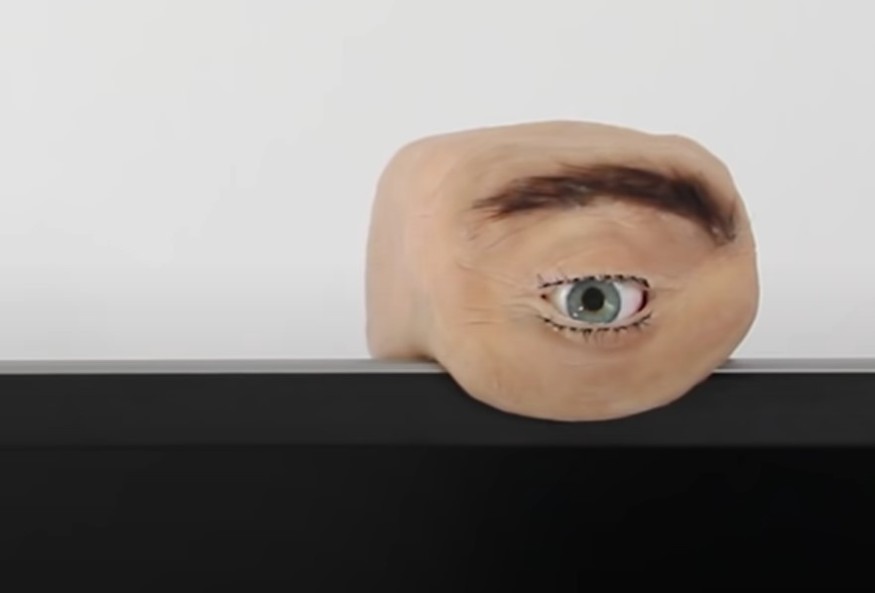People might not know it, but webcams are almost always watching people breaching the privacy of many people that creates security issues. In an attempt to raise awareness on this issue, the German team who created the phone case that looked like a human skin created the Eyecam that looks and moves like a real eye.
According to Government Technology, this piece of human-looking tech is a webcam that is complete with an eyelid, lashes, and eyebrow, making it look real.
The people behind this new technology are Marc Teyssier and his team at the Human-Computer Interaction Lab at Saarland University. They aim to trigger reactions and reflections on sensing devices, such as webcams, which highlights privacy issues and security problems.

Will Eyecam Soon Replace Webcams?
According to IFL Science, Teyssier is known for making uncanny technologies that spark discussion and speculation. One of his previous works was the artificial human skin turned to phone cases, and also a finger used for smartphones that became a controversial topic.
The Eyecam is their team's latest creation of fleshy robots that are intended to act as an effective, although creepy, a reminder of living in front of cameras whether we are aware or unaware of it. Most of the time, people barely notice the cameras, and Teyssier hopes that Eyecam will inspire talks about privacy issues in an era of surveillance technology.
They think that replacing surveillance cameras with an emotive camera, such as the Eyecam, will make it obvious when they are watching a person.
"Webcams are in front of us, looking at us, constantly," Teyssier said. "A webcam and a human eye share a purpose: they 'see'. But in contrast to the webcam, human eyes are expressive. Human eyes can express happiness, anger, boredom, or fatigue. They can look curious, distracted, or focused."
Ultimately, their goal is to spark a further discussion on privacy against the sensing devices around.
Types of Eye Movements
Eyecam does not only looks like a real eye, but it also moves like one. Eyecam's movements are inspired by real eye movements which have four basic types, according to the second edition of the book Neuroscience digitally uploaded in NCBI.
These four types of eye movements are saccades, smooth pursuit movements, vergence movements, and vestibulo-ocular movements.
Saccades are rapid, ballistic eye movements that abruptly change the point of fixation and ranges from small movements during reading to larger movements while gazing around the room. It can be elicited voluntarily or reflexively when the eyes are open. Rapid eye movements during the REM stage of sleep are also called saccades.
Meanwhile, smooth pursuit movements are much slower and are under voluntary control, wherein the observer would choose to track a moving stimulus or not.
The third type, vergence movements, aligns the fovea of each eye with targets at different distances from the observer. That means these movements are disconjugate, an opposite to the two previous movements that move the two eyes in the same direction (conjugate).
Lastly, vestibulo-ocular movements stabilize the eyes relative to the external world to compensate for head movements. So when the head moves from either side, the vestibular system produces rapid corrective eye movements to keep images from slipping on the surface of the retina to still create the right image.
RELATED ARTICLE : Emojify Shows How AI Emotion Recognition Technology Works and its Implications to Society
Check out more news and information on Tech & Innovation on Science Times.










